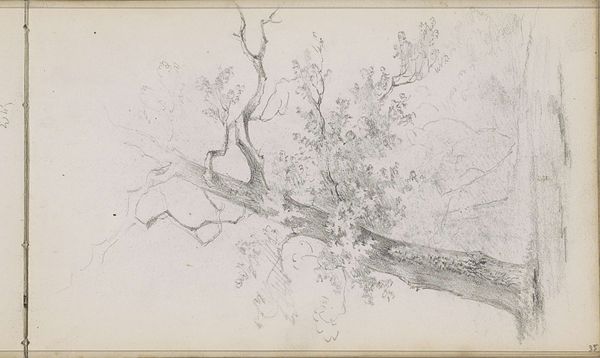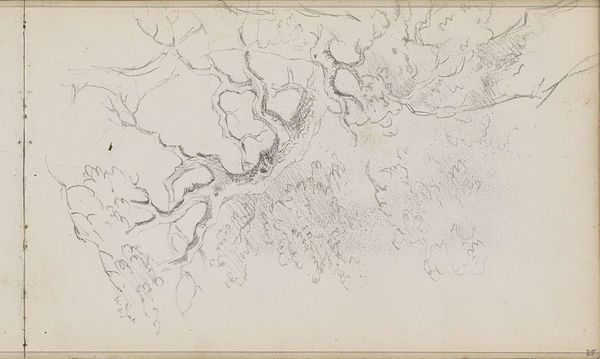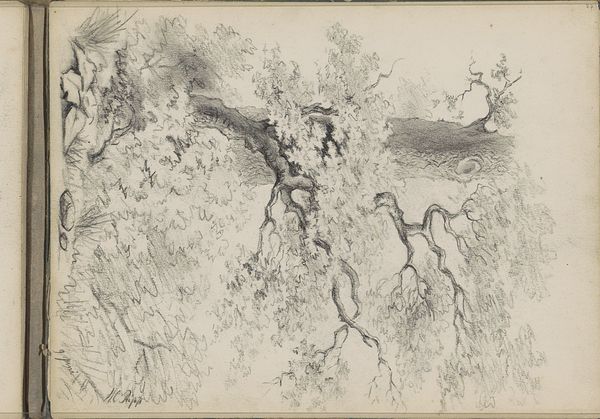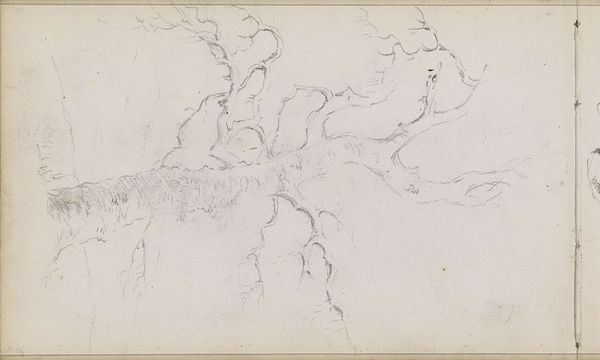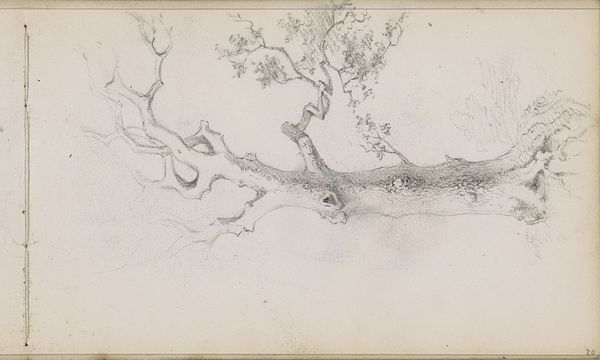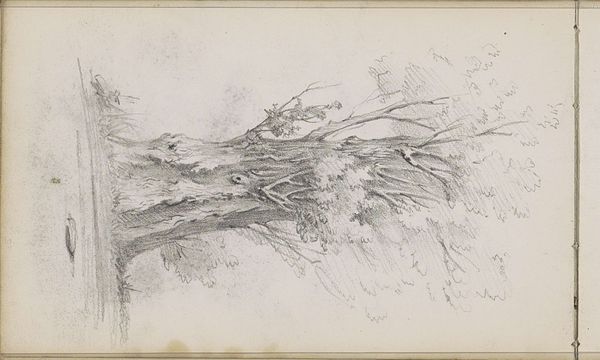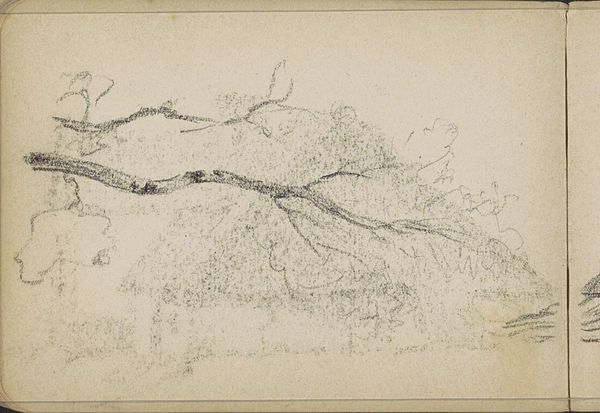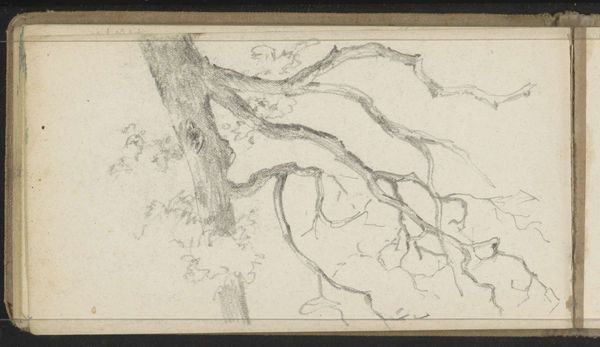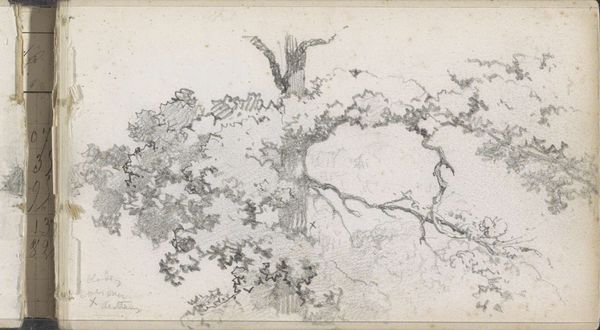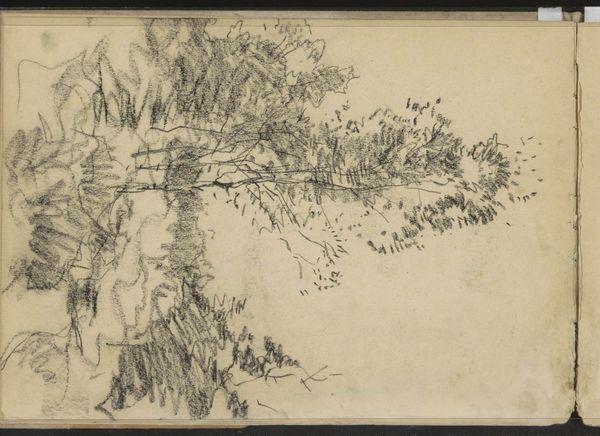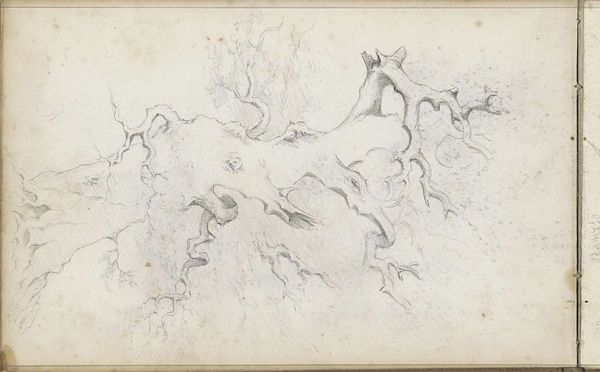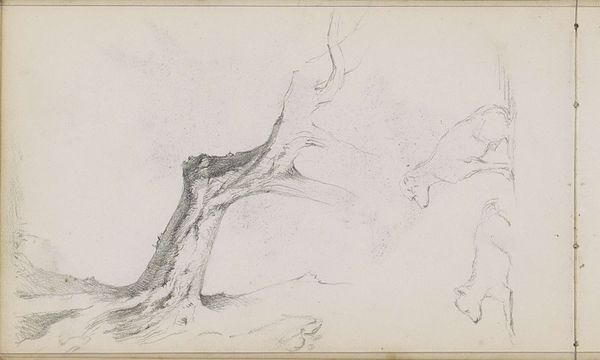
drawing, pencil, graphite
#
tree
#
drawing
#
ink painting
#
pencil sketch
#
landscape
#
pencil
#
line
#
graphite
Dimensions: height 142 mm, width 218 mm
Copyright: Rijks Museum: Open Domain
Curator: This drawing, aptly titled "Boom," might have been created around 1874 or 1875 by Willem Cornelis Rip. It’s rendered in graphite and pencil on paper. It's a striking study, quite linear in its approach. What's your first impression? Editor: There’s a certain fragility to it. The skeletal branches suggest a period of dormancy or perhaps even decline. It speaks of nature's cycle of death and rebirth and seems relevant, considering land ownership during the era in which this drawing was produced. Curator: Exactly. Rip's delicate lines highlight the organic textures of the tree. Looking at the density of the graphite, particularly in the gnarled sections, one gets a real sense of weight and material presence. Editor: And consider the context! Agrarian societies and their relationships with nature. Whose access to this “Boom” or land, were restricted due to evolving Dutch colonial economic policies, if at all? How might those disenfranchised identities have perceived Rip's art? What was the racial landscape? It is thought-provoking to delve into the socio-economic background! Curator: A valid point, since it moves beyond the immediate visual. I am compelled to highlight the formal aspects—the layering of lines, the stark contrast. These are indicative of a deliberate approach, reflective of an academic tradition. The method itself creates the landscape we're engaging with. Editor: Yes, but understanding the formal aspects also helps us grasp how they could have mirrored or subverted cultural norms. Consider it a potential form of subtle political statement on labor. How the artist labored and captured every detail. Every tool he had accessible to him. What choices led him here. Curator: So, seeing "Boom" not just as an aesthetic object, but as a cultural product of its time. Interesting. Editor: Absolutely. That’s what makes it speak across centuries and different identities. Curator: I'll definitely mull over how this all informs my appreciation for Rip’s attention to materials. Thanks! Editor: A fruitful exercise to bridge aesthetic beauty and complex stories, right?
Comments
No comments
Be the first to comment and join the conversation on the ultimate creative platform.
